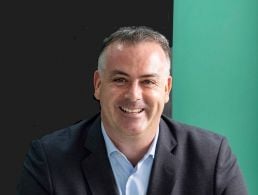Armed with many years’ experience in the industry, Patricia Scanlon gambled on speech technology taking off. Did she win?
At the start of the year, SoapBox Labs raised €1.2m in seed funding, helping to get its children’s speech technology off the ground. Patricia Scanlon, founder of the company, was receiving due reward for her punt into the unknown.
Well, ‘unknown’ is perhaps a little strong a word as, following seven years with Bell Labs, Scanlon could see what was happening.
Lack of options
A Kildare native, Scanlon had been working in research and commercialisation for more than a decade, with a focus on speech technologies.
One day, sitting with her three-year-old daughter, she was looking through the various apps that were available to help educate her child.
There weren’t many dealing with speech technology and, of those that did, none that she could find were dealing with assessment.
“I knew how big voice technology was getting, but no-one was looking at kids’ stuff,” she said. The idea stuck with her and, in 2013, Scanlon founded SoapBox Labs.
“It’s about looking around and realising what the problem was. I knew what needed to be done to help fix children’s speech, and I knew it wouldn’t be easy.”
Academia and industry
Scanlon, a speaker at Inspirefest this coming summer, started out as a research engineer – a member of the technical staff at Bell Labs.
“I was working on research, falling between academia and industry,” she said. This meant Scanlon had front-line experience of how hard it is to get an idea, no matter how good or ground-breaking, from a laboratory or a university into stores or online.
“My experience is these [projects] end up sitting on the shelf and people move on,” she said.
“There’s a huge gap. Someone is doing something really cool in university and then they say, ‘Let’s commercialise it’. But it’s a huge leap to get it to market.
Image: rawpixel.com/Shutterstock
“When I went into Bell at first, I was an academic. Then, after a few years, I wasn’t. As researchers, we’re fanciful, but then there’s a reality to look at. ‘Does anyone want this?’”
At Bell Labs, Scanlon saw that a lot of what makes up a production line comes through partnerships. Nobody goes it alone. At some stage, they will lose focus or make a mistake, as it’s so difficult to control everything. And, through her role there, she, without realising it at first, became adept at pitching.
Make the jump
As the years progressed, and her idea for SoapBox Labs emerged, Scanlon had learned enough skills, gained enough experience and made enough contacts to go it alone.
“Our idea was just to look at what we were good at. In our case, it was speech technology. So, let’s find partners who can do everything else: front-end software, apps, services, games etc,” she said.
To get these partners, and to secure the funding needed to push SoapBox Labs closer to a viable reality, Scanlon, along with Dr Martyn Farrows – an advisor to the company – started making calls.
“It’s networking,” she said. “I have more than a decade of contacts. Martyn Farrows has decades of experience, too. This is good for making introductions, tapping into investors.”
Importantly, the duo’s pull meant they were entering businesses at boardroom level, rather than on the ground floor – a huge aide to a start-up’s hopes.
Luck played its part, too.
Feel the rain
Held at Dogpatch Labs last June, Astia Angels’ venture showcase was a workshop held in parallel with Inspirefest 2016. Scanlon turned up to what, largely thanks to bad weather, was an under-attended event.
“It was raining that day, and despite receiving some 80 or so RSVPs from entrepreneurs for this workshop event, only about 20 showed up,” said Victoria Pettibone, MD of Astia Angels, who was over from the US for the event.
That meant Scanlon walked into a workshop with a 1:2 ratio of investors to entrepreneurs. A goldmine.
Raising seed funding of €1.2m, SoapBox ultimately attracted investment from Elkstone, Enterprise Ireland’s High-Potential Start-up Fund, a consortium of private investors from Ireland, the US and Asia, and Astia.
Interestingly, half of the company’s funding comes from the US at this stage. Scanlon is aware that the big money is out west.
Image: Monkey Business Images/Shutterstock
Pick and choose
Selective choosing of investors played a key role, too, with Scanlon wary of taking funding from anybody who didn’t understand what SoapBox was trying to do.
“I felt we were going to be at odds with people who didn’t understand what we do at some stage,” she said. Picking and choosing investors is not a thing everybody can do but, as Scanlon explained, “it helps when you own the company”.
Now, armed with sufficient funding, it’s heads down at SoapBox. “It’s just nice to be able to spend the time on the product now, rather than the fundraising,” said Scanlon.
The plan is to get a product to market before the year is out, with something lined up for the end of the year that should, Scanlon hopes, “make a big, big splash”.
Until then, the nine-strong staff at SoapBox is taking it one quarter at a time. Setting the tone, this quarter will see that team grow.
Patricia Scanlon will be speaking this summer at Inspirefest, Silicon Republic’s international event connecting sci-tech professionals passionate about the future of STEM. Book now to get your Early Bird tickets.




